Forex markets reversed course with Fed Governor Robert Kaplan last night. He wants taper. DXY rose and EUR fell:

The Australian dollar fell:
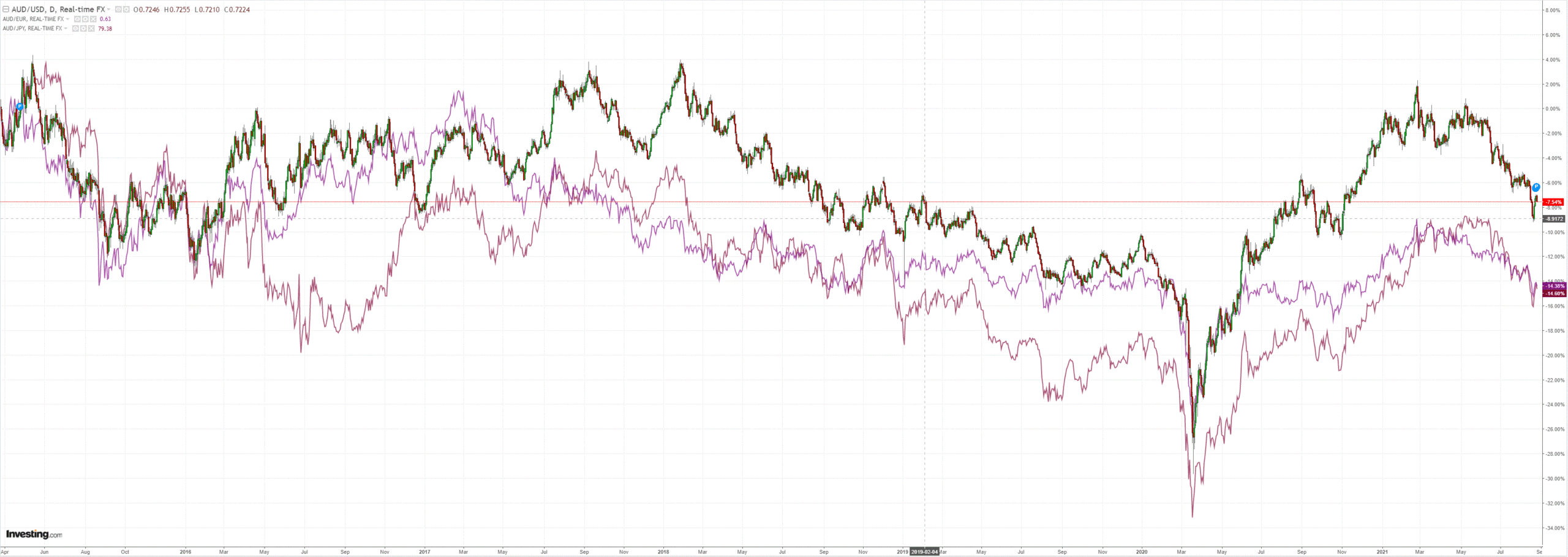
The usual followed with commodities, miners and EMs sagging:

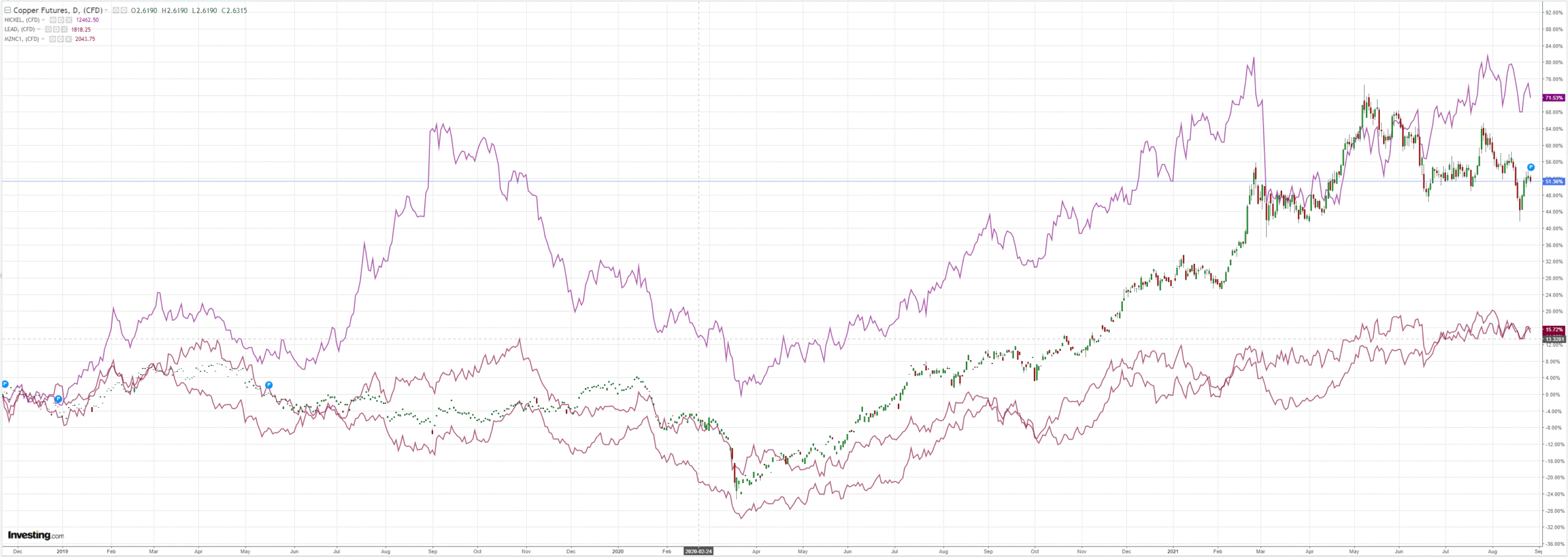
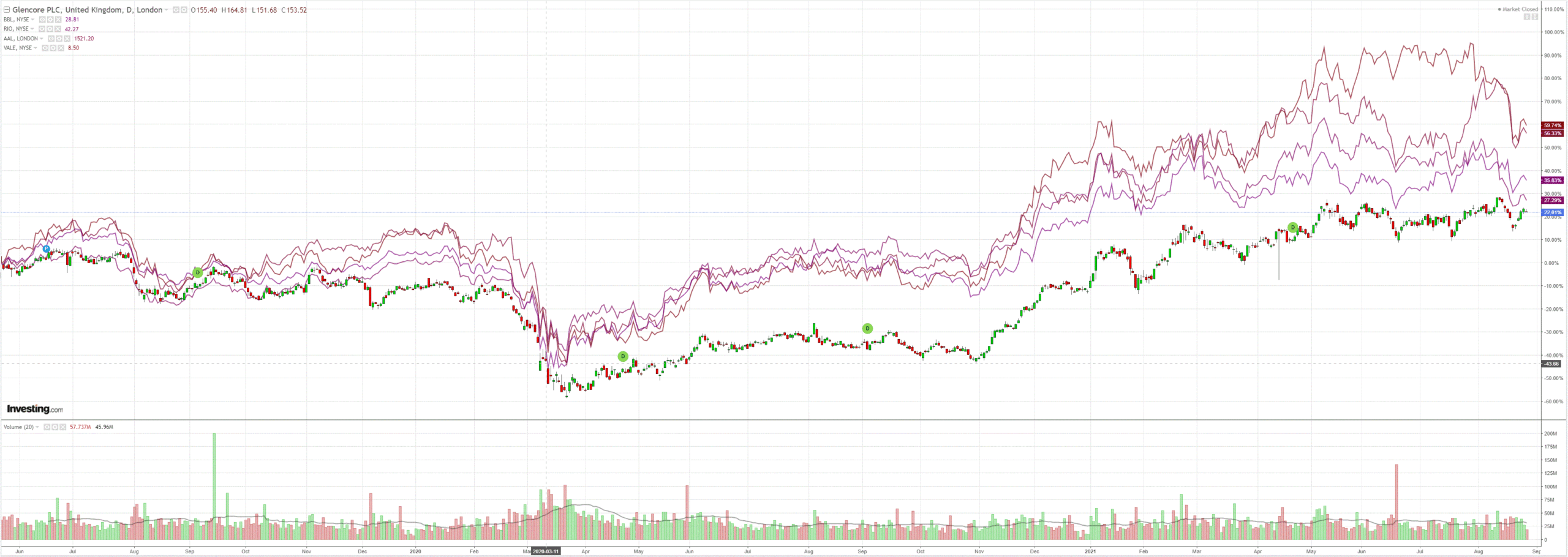

Junk is still OK:
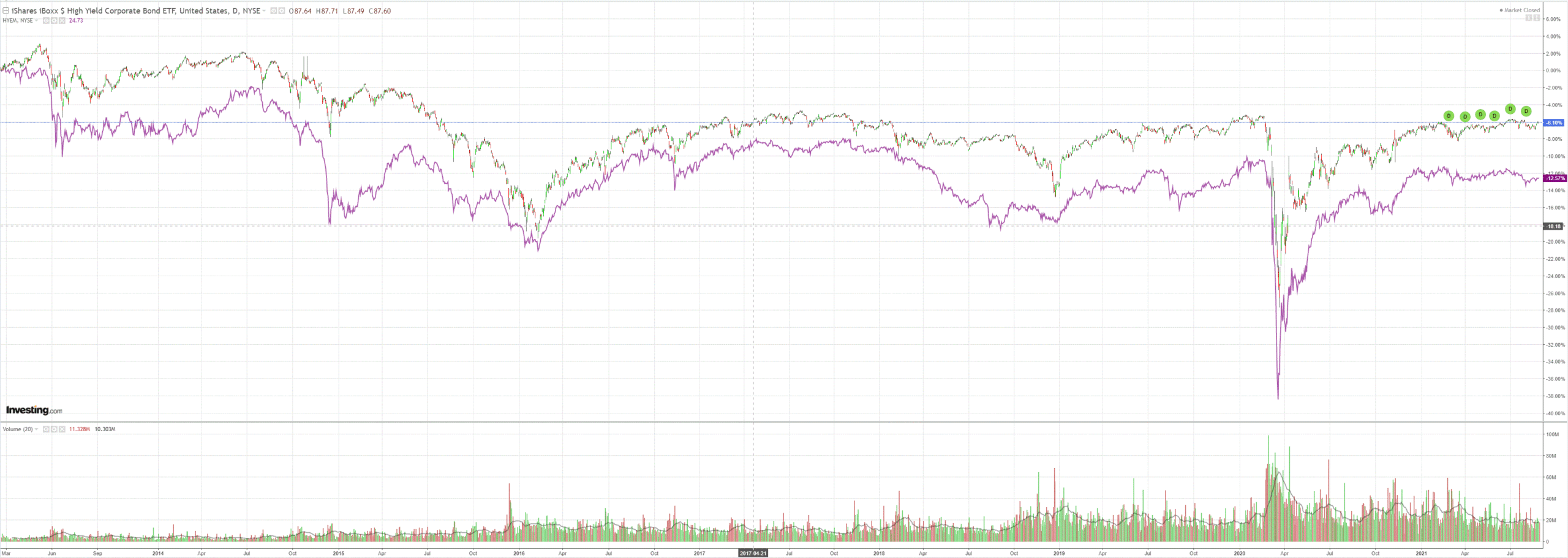
But the curve resumed flattening:
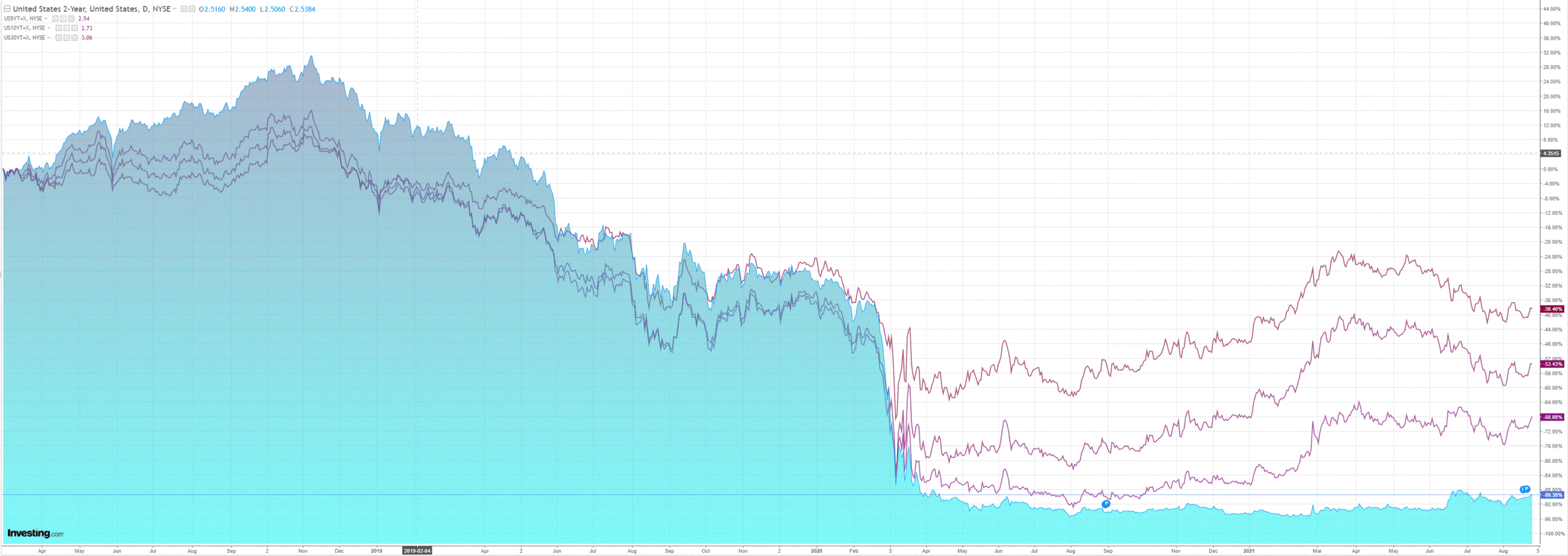
And stocks rolled over:
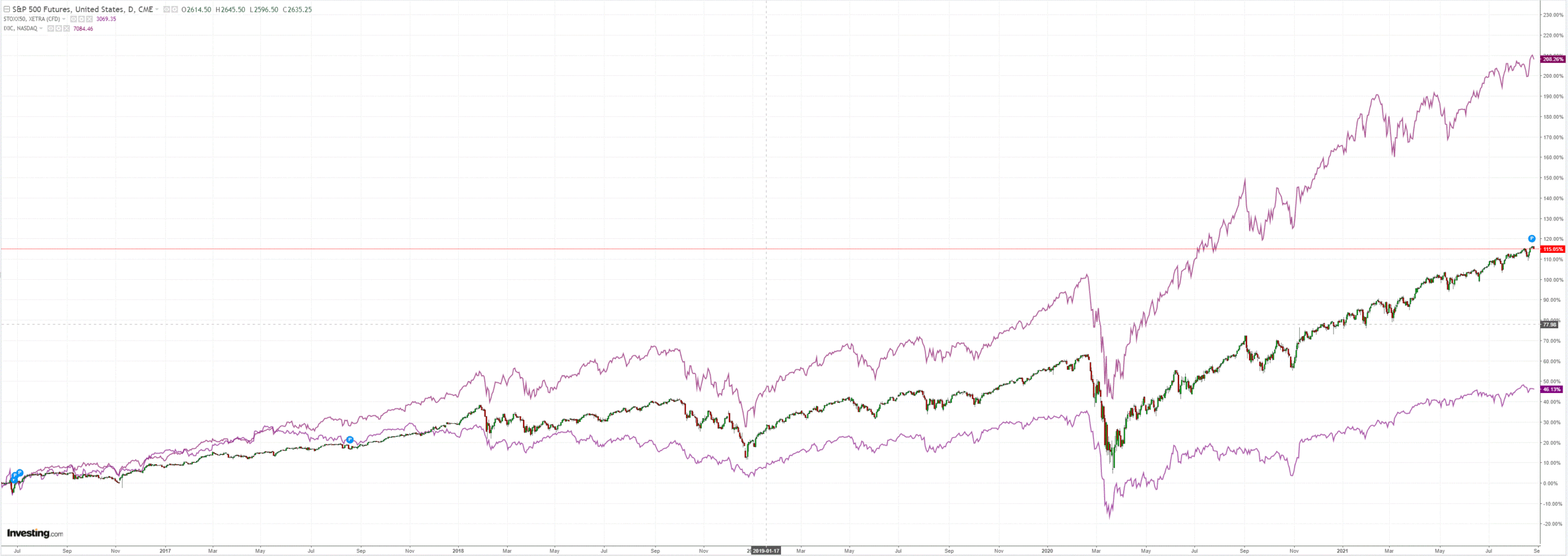
Westpac has the data:
Event Wrap
US Q2 GDP’s second estimate was slightly firmer than expected. Headline GDP rose to 6.6%q/q annualised, from prior 6.5% (consensus was 6.7%), with private consumption rising 11.8%q/q annualised (estimate 12.2%, prior 11.8%). Core PCE was unchanged at 6.1%. Weekly initial jobless claims were as expected at 253k, from prior 349k. Continuing claims were slightly higher than expected at 2.862mn (vs. est. 2.772mn). The Kansas Fed manufacturing survey remained firm at 29 (prior 30, est. 25). Expectations were higher at 36 (prior 33), as were new orders at 34 (prior 26), but export orders pulled back to 7 from 16.
FOMC member Kaplan said he would prefer to start tapering sooner and move gradually, and will push for an announcement in September and start in October. He remains concerned over the unintended consequences of the Fed’s purchases, reiterating that bond buying does help boost demand, but demand is not a problem. George said tapering should start this year. She said the Delta variant does not change her calculus as to when to start making adjustments, and that the Fed has reached the criteria of substantial progress. Bullard said the economy does not need much more stimulus, calling for a start to tapering. He is also worried about financial stability issues, about an “incipient housing bubble,” noting he was too complacent last time and that turned out to be a mistake. He would like to end tapering by the end of Q1 in order to provide “optionality”, and then favours a passive balance sheet runoff.
European confidence surveys remained firm, although off recent highs. German Sep. GfK consumer confidence fell to -1.2 from prior -0.4 (est. -0.5). French Aug. business confidence fell from 113 to 110 (est. 112), but manufacturing rose to 110 (prior 109, est. 109), while the outlook fell to 16 (from 20).
Event Outlook
Australia: Westpac expects a 2.0% decline (market at -2.5%) in July retail sales, as lockdown measures intensified in Sydney and Melbourne entered another 14-day period of restrictions.
New Zealand: Westpac sees further solid gains in the July employment indicator. The August figures will no doubt be weaker, with the country entering a snap lockdown. However, during the first lockdown in March 2020, the drop in filled jobs was relatively small and quickly unwound, whilst hours worked sustained more of a sharp drop.
China: Industrial profits have been buoyed over the past year by commodity prices and global re–opening.
US: Wholesale inventories are set for a rebuild following the Q2 drawdown (market f/c: 1.0%). The market consensus for July personal income is a 0.2% gain, lifted by wage income and child tax credit subsidies. July personal spending should reflect a rotation to services consumption, sustaining gains (market f/c: 0.4%). Further, the July core PCE deflator should provide evidence of the transitory nature of recent inflation pressures (market f/c: 0.3%m/m, 3.6%y/y).
Finally, FOMC Chair Powell will speak on day 1 of the Jackson Hole symposium – the market will be seeking clarity on the policy outlook.
Here’s the interview that is all that mattered:
I still expect the Fed to have a bob each way but it looks like it will be moving in the taper direction which will not aid commodities, EMs or the Australian dollar.
